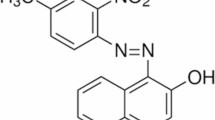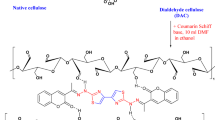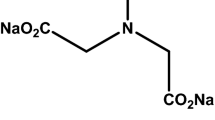Abstract
THE effects of dye solvents on the selectivity of histo-logical staining have not been extensively investigated. Robards and Purvis1 have reported preferential staining of the gelatinous fibres of tension wood by chlorazol black E when dissolved in methyl cellosolve. Earlier the influence of solvents on the staining reactions of this dye was discussed by Cannon2. Puchtler and Sweat3 reported a method for selectively staining haemoglobin in sections with amido black in a methanol solution, but not in water. Investigation of phospholipid staining by Luxol fast blue G revealed a changing selectivity dependent on the solvent used4. This dye in methanol solution was later found to stain only collagen and elastin5.
This is a preview of subscription content, access via your institution
Access options
Subscribe to this journal
Receive 51 print issues and online access
$199.00 per year
only $3.90 per issue
Buy this article
- Purchase on SpringerLink
- Instant access to full article PDF
Prices may be subject to local taxes which are calculated during checkout
Similar content being viewed by others
References
Robards, A. W., and Purvis, M. J., Stain Tech., 39, 309 (1964).
Cannon, H. G., J. Roy. Micros. Soc., 61, 88 (1941).
Puchtler, H., and Sweat, F., J. Histochem. Cytochem., 12, 900 (1964).
Salthouse, T. N., Nature, 199, 821 (1963).
Salthouse, T. N., J. Histochem. Cytochem., 13, 133 (1965).
Kirschbaum, J. (personal communication).
Tanford, C., Physical Chemistry of Macromolecules (John Wiley and Sons Inc., New York, 1963).
Author information
Authors and Affiliations
Rights and permissions
About this article
Cite this article
SALTHOUSE, T. Preferential Staining of Collagen by Acid Dyes in Methanol. Nature 210, 1277 (1966). https://doi.org/10.1038/2101277a0
Issue date:
DOI: https://doi.org/10.1038/2101277a0



